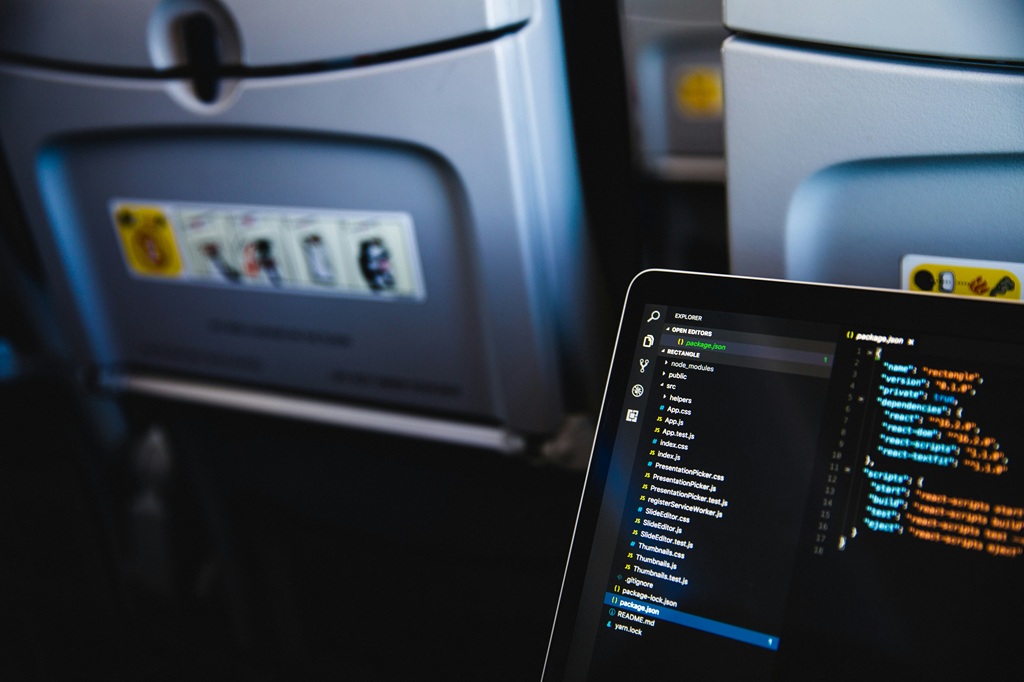The demand for Wi-Fi connectivity has become a determining factor in the passenger experience. It’s no longer just about reaching the destination, but about how the journey is experienced. In this context, onboard Wi-Fi has gone from being an added value to a basic necessity, especially in sectors such as aviation and rail transport.
This article delves into how Wi-Fi onboard influences the traveler’s purchase decision, what the connected user really expects, and how technologies like Galgus’ are revolutionizing the way operators address this challenge.
Wi-Fi onboard: an increasingly decisive factor
Various studies, such as the one conducted by Viasat, indicate that 83% of respondents say they are more likely to rebook with an airline that offered quality Wi-Fi, while 81% said that Wi-Fi was important to their onboard experience.
29% are willing to pay more for their ticket to benefit from free Wi-Fi. Aside from the ticket price, free in-flight Wi-Fi has become the most influential factor for passengers when choosing an airline (22%), ahead of free food and drinks 1 (18%), legroom (13%), and free entertainment (9%).
Half of the passengers worldwide (50%) now say that Wi-Fi should be free on all short-haul flights and more than eight out of ten (82%) for long-haul flights.
This data, which we can partially extrapolate to trains, not only confirms the growing importance of connectivity, but also reflects a reality that is already influencing the choice of airlines and rail operators.
What do passengers expect from Wi-Fi onboard?
Traveler expectations have evolved at the pace of their daily lives, where immediate and frictionless access to the internet is taken for granted. Thus, when traveling, they expect the onboard connectivity experience to match or even exceed what they have on the ground.
It’s not just about checking email or sending a message. The modern user wants to make the most of their time in transit, and that requires Wi-Fi on board that is:
Seamless and uninterrupted
The user expects to be able to connect at any point during the journey, from boarding to arrival at the destination, without unexpected disconnections or dead zones.
Signal continuity is crucial to ensure a satisfactory experience, especially on long journeys or when performing connection-sensitive activities, such as a video call or a live stream.
Fast and stable
Speed is a key factor. It’s no longer enough to send text messages: passengers want to access streaming platforms, participate in online meetings, upload content to social media, or use cloud-based collaborative work tools.
All of this requires robust bandwidth and low latency, capable of supporting multiple devices simultaneously without compromising quality.
Secure and privacy-respecting

The growing concern for data protection also extends to the field of transportation. Travelers demand a Wi-Fi network that protects their personal information, avoids cybersecurity risks, and guarantees anonymity if they so desire.
Trust in the system is a prerequisite for connecting, especially when it comes to entering passwords, making payments, or handling sensitive data.
Intuitive and easy to use
Access to the Wi-Fi network should be immediate and uncomplicated. Users appreciate being able to connect without needing to download apps, create accounts, or enter unnecessary data.
The simpler the process, preferably automatic, the greater the passenger adoption and satisfaction. Additionally, clear interfaces and multilingual support are aspects that make a difference in international contexts.
In short, passengers expect Wi-Fi on board to be not just an extension of the service, but an integral part of their travel experience. A network that allows them to make the most of their time, feel secure about their digital safety, and feel just as connected, or even more so, than in their daily lives.
Technical challenges of offering quality Wi-Fi in mass transit environments
Providing quality Wi-Fi on board is no easy task. Both on airplanes and trains, there are significant technical limitations that impact the user experience:
- High density of simultaneous users: an environment like an airplane cabin or a train car concentrates dozens or hundreds of passengers with multiple devices connected at the same time. This intensive demand can saturate the network if it is not properly managed.
- Physical restrictions: the metal structure and elongated geometry of cabins and carriages hinder the uniform propagation of the signal, creating areas with low coverage and interference.
- Electromagnetic interference: electronic navigation or communication systems can interfere with Wi-Fi network equipment, requiring extremely precise management of the radio spectrum.
How Galgus is revolutionizing the Wi-Fi on board experience
Faced with these challenges, Galgus’ Cognitive Hotspot Technology (CHT) offers a differentiated solution based on artificial intelligence, which automatically optimizes network resources in real time, without human intervention.
Its advantages include:
- Proactive Load Balancing: Intelligently distributes users among different access points to avoid congestion.
- Smart Roaming: Prevents connection drops when switching between APs during passenger movement.
- Automatic Channel and Bandwidth Assignment: Chooses the optimal channel for each moment based on internal and external interference.
- Automatic Power Control: Ajusta dinámicamente la potencia emitida para minimizar interferencias y ahorrar energía.
- Smart Multicast: Converts multicast traffic to unicast, ideal for streaming services on multiple screens.
- Pre-balancing: Assigns new users in a balanced way among available APs.
Thanks to this technology, even networks with Wi-Fi 5 standards can outperform conventional Wi-Fi 6 networks in adverse environments.
For companies, this is a determining factor, since renewing the entire Wi-Fi infrastructure of their vehicles, trains, or airplanes represents a very high cost. Thanks to Galgus’ technology, the average lifespan of their devices is significantly extended.
Beyond connection: location and presence analytics
The Wi-Fi on board network not only serves to offer connectivity, but also becomes a powerful source of information to optimize operations and improve the passenger experience. Thanks to the incorporation of advanced technologies such as those of Galgus, the value of Wi-Fi is multiplied by functioning as an analytical platform capable of generating knowledge in real time.
What kind of data can be obtained?
Access points with Galgus technology, in addition to managing the network, capture and process location and presence data without the need for devices to be connected. This allows operators to:
- Measure in real time the distribution of passengers inside the cabin or carriages, identifying areas with higher concentration to improve comfort, safety and network performance.
- Analyze user behavior on board: where they move, how long they stay in certain areas, when and how they use the Wi-Fi service, etc. This allows for more informed decisions about service locations, evacuation routes, information points, or staff distribution.
- Identify usage and demand patterns that help personalize the onboard experience. For example, if certain passengers connect recurrently from a specific area or at certain time slots, commercial offers, multimedia content, or digital services can be adapted based on that information.
- Predict future user behavior using artificial intelligence techniques to anticipate demands, adjust bandwidth, or plan resources in advance.
And what about privacy?
One of the biggest concerns when managing this type of information is user privacy. Galgus solves this challenge with its Galgus Fingerprint technology, which anonymizes data from the access point itself, before it leaves the device.
That is, the data is processed and treated as aggregated information, without it being possible at any time to associate it with a specific person or their individual device.
In addition, this system:
- Does not require app installation or special permissions from the user.
- Is 100% compliant with European data protection regulations (GDPR).
- It is based on the analysis of Wi-Fi signals emitted by nearby devices, whether or not they are connected, which allows a much more precise view of the environment without invading the privacy of travelers.
What impact does this have for operators?

For airlines or railway companies, this layer of advanced analytics represents a strategic tool for decision-making. Thanks to this data, companies can:
- Improve the interior design of vehicles and the layout of services.
- Make informed decisions about increasing frequencies, routes, or resizing spaces.
- Personalize loyalty campaigns or digital experiences offered on board.
- Identify anomalous behaviors or potential security situations before they become a problem.
Ultimately, Wi-Fi on board has ceased to be a luxury and has become a key element in the traveler’s purchase decision. Its impact is reflected in customer satisfaction, loyalty, and willingness to pay more for an uninterrupted experience.
For airlines and rail operators, this represents a unique opportunity: not only to improve their service, but also to turn connectivity into a source of added value. And on that path, technologies like Galgus’ make the difference. Shall we talk about it?








